Related Research Articles
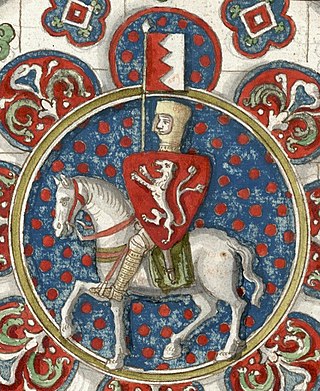
Simon de Montfort, 6th Earl of Leicester, later sometimes referred to as Simon V de Montfort to distinguish him from his namesake relatives, was an English nobleman of French origin and a member of the English peerage, who led the baronial opposition to the rule of King Henry III of England, culminating in the Second Barons' War. Following his initial victories over royal forces, he became de facto ruler of the country, and played a major role in the constitutional development of England.
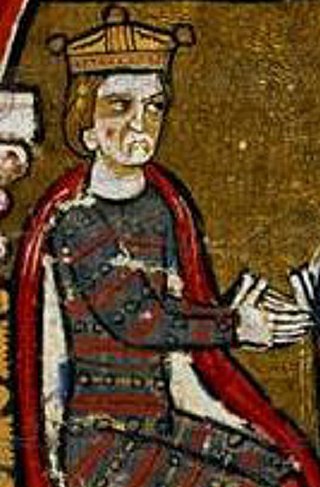
Peter II the Catholic was the King of Aragon and Count of Barcelona from 1196 to 1213.
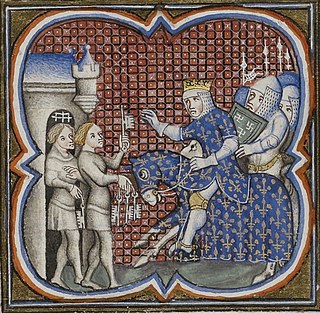
Louis VIII, nicknamed The Lion, was King of France from 1223 to 1226. As prince, he invaded England on 21 May 1216 and was excommunicated by a papal legate on 29 May 1216. On 2 June 1216, Louis was proclaimed "King of England" by rebellious barons in London, though never crowned. He soon seized half the English kingdom but was eventually defeated by the English and after the Treaty of Lambeth, was paid 10,000 marks, pledged never to invade England again, and was absolved of his excommunication.

Simon de Montfort, 5th Earl of Leicester, known as Simon IVde Montfort and as Simon de Montfort the Elder, was a French nobleman and knight of the early 13th century. He is widely regarded as one of the great military commanders of the Middle Ages. He took part in the Fourth Crusade and was one of the prominent figures of the Albigensian Crusade. Montfort is mostly noted for his campaigns in the latter, notably for his triumph at Muret. He died at the Siege of Toulouse in 1218. He was Seigneur of Montfort from 1188 to his death and Earl of Leicester in England from 1204. He was also Viscount of Albi, Béziers and Carcassonne from 1213, as well as Count of Toulouse from 1215.
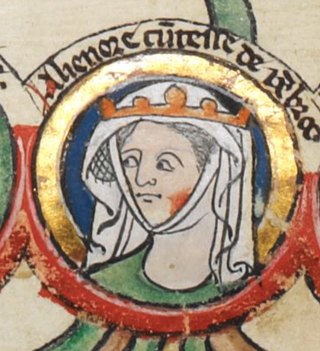
Eleanor of England was the youngest child of John, King of England and Isabella of Angoulême.
The count of Toulouse was the ruler of Toulouse during the 8th to 13th centuries. Originating as vassals of the Frankish kings, the hereditary counts ruled the city of Toulouse and its surrounding county from the late 9th century until 1270. The counts and other family members were also at various times counts of Quercy, Rouergue, Albi, and Nîmes, and sometimes margraves of Septimania and Provence. Count Raymond IV founded the Crusader state of Tripoli, and his descendants were also counts there. They reached the zenith of their power during the 11th and 12th centuries, but after the Albigensian Crusade the county fell to the kingdom of France, nominally in 1229 and de facto in 1271.

Raymond VI was Count of Toulouse and Marquis of Provence from 1194 to 1222. He was also Count of Melgueil from 1173 to 1190.

Raymond VII was Count of Toulouse, Duke of Narbonne and Marquis of Provence from 1222 until his death.

Amaury de Montfort, Lord of Montfort-l'Amaury, was the son of Simon de Montfort, 5th Earl of Leicester and Alix de Montmorency, and the older brother of Simon de Montfort, 6th Earl of Leicester. Amaury inherited his father's French properties while his brother Simon inherited the English title of Earl of Leicester.
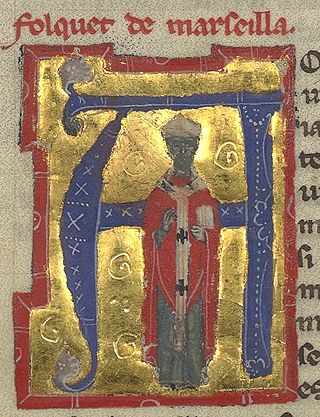
Folquet de Marselha came from a Genoese merchant family who lived in Marseille. He is known as a troubadour, and then as a fiercely anti-Cathar bishop of Toulouse.
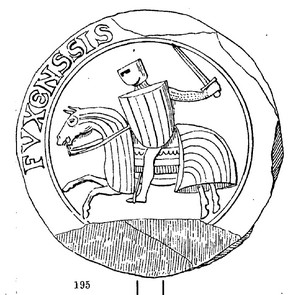
Roger Bernard II, called the Great, was the seventh count of Foix from 1223 until his death. He was the son and successor of the count Raymond-Roger and his wife Philippa of Montcada.

Lavelanet is a commune in the Ariège department in the Occitanie region in southwestern France.
Guy de Montfort was the Count of Bigorre from 6 November 1216 to 1220 in right of his wife, Petronilla. He was a son of Simon de Montfort, 5th Earl of Leicester and Alice of Montmorency.
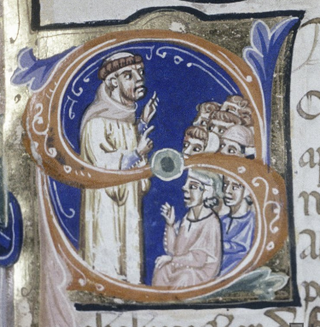
Fulk of Neuilly was a French preacher of the twelfth century, and priest of Neuilly-sur-Marne. His preaching encouraged the Fourth Crusade. He is a beatus of the Roman Catholic Church; his feast is celebrated on March 2.
Matthew I was lord of Montmorency, Marly, Conflans-Sainte-Honorine and Attichy. He was also Constable of France from 1138 to 1160 under Louis VII.
Alix or Aline FitzRoy was the illegitimate daughter of King Henry I of England by one of his many mistresses. She married Matthieu I of Montmorency and had the following issue:
- Henry, died young before 1160
- Bouchard V de Montmorency,, who married in 1173 Laurette of Hainaut, daughter of Count Baldwin IV of Hainaut. They had a son Matthieu II de Montmorency, nicknamed the Great.
- Theobald de Montmorency, seigneur de Marly, he went on crusade in 1173. He died as a Cistercian monk sometime after 1189.
- Herve de Montmorency, abbot of Saint-Martin de Montmorency, then deacon of the Church and dean of Paris before his death in 1192.
- Matthieu de Montmorency, he inherited the lordship from his brother Theobald.
Petronilla of Bigorre or Petronilla of Comminges was ruling Countess of Bigorre between 1194 and 1251. She was the only child of Bernard IV, Count of Comminges, and his wife Stephanie-Beatrice IV, Countess of Bigorre. Petronilla succeeded her mother in 1194 as Countess of Bigorre; she was also Viscountess of Marsan and Nébouzan through further successions. She reigned as countess for fifty-seven years, in which time she was married five times.
Amaury I of Craon (1170–1226), was Lord of Craon, of Chantocé, Ingrandes, Candé, Segré, Duretal, Baugé and of Lude.

Matthew II or Mathieu II, called the Great or the Great Constable, was lord of Montmorency from 1189 and Constable of France from 1218 to 1230.

Bouchard I de Marly was a French knight and crusader, lord of Marly, Montreuil-Bonnin, Saissac, Saint-Martin-en-Languedoc and Picauville.
References
- 1 2 Baldwin 2019, p. 267.
- ↑ Maddicott 1994, p. 5.
- ↑ Maddicott 1994, p. 5-6.
- ↑ Maddicott 1994, p. 6.